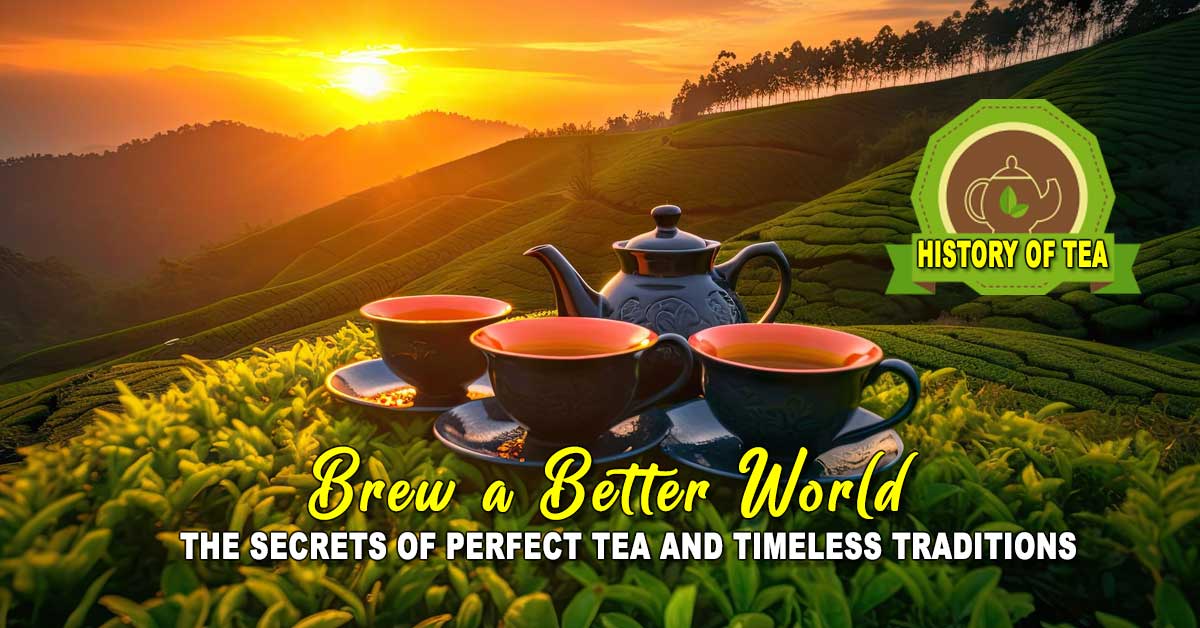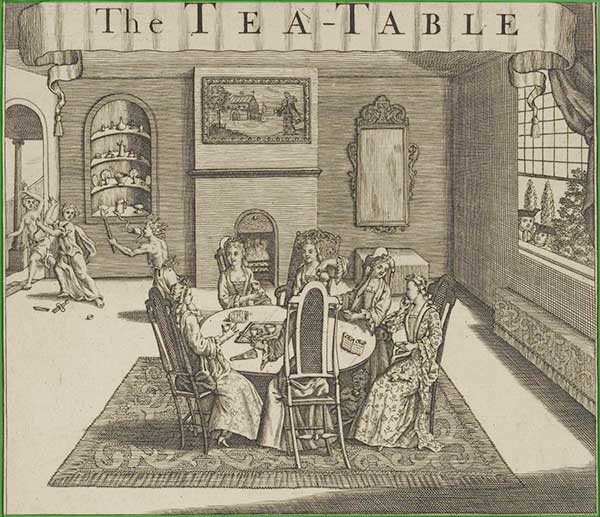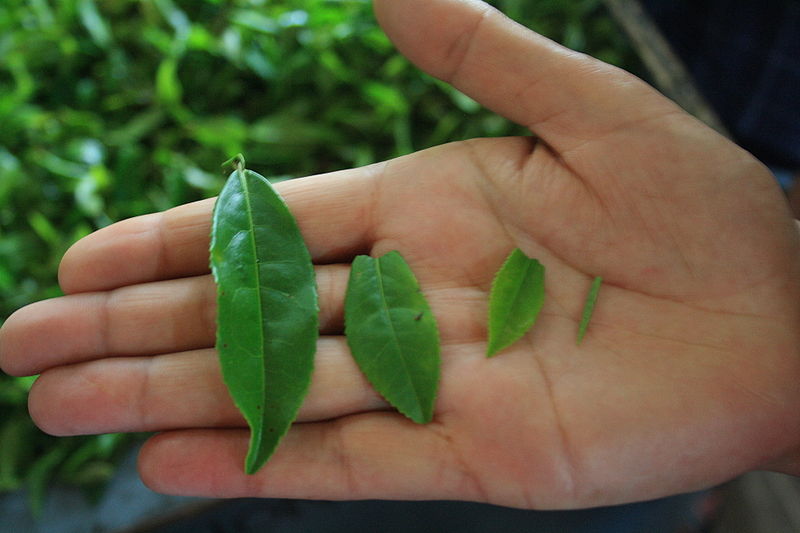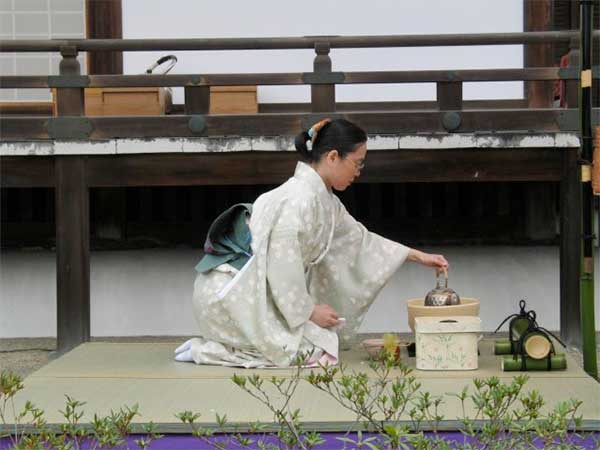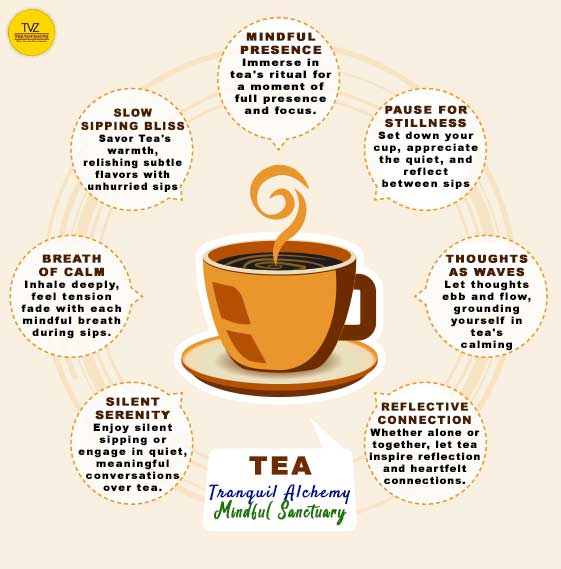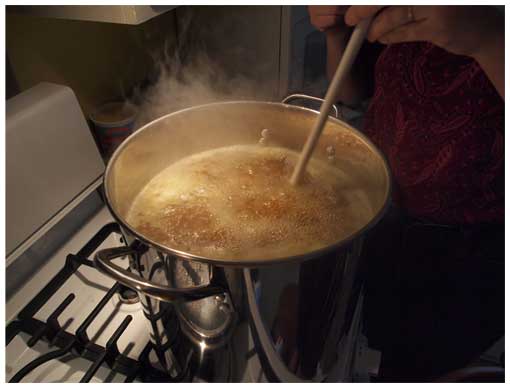Picture this: a world where the comforting aroma of warm tea wraps around you like a cozy blanket. Welcome to the enchanting realm of Tea. Each cup carries the rich history of Tea. Promising moments lie ahead for us all.
In this aromatic odyssey, we’ll unravel the secrets of perfect tea brewing. And during the journey, explore the timeless traditions that have woven themselves into the fabric of history. Amidst the pursuit of flavor, people often embark on a quest for energy booster drinks, seeking a harmonious blend of refreshment and vitality.

From the mystical ancient history of Tea in China to the bustling chai stalls of Tea in India. From the History of Tea Drinking, to Tea Plantation in India. The journey through the Tea estates reveal the origin of Tea in India. We’ll explore the kaleidoscope of its Types of Tea and its flavors. Tea varieties and their benefits extend far beyond relaxation, too. In this article, we’ll explore how the best Tea for health can boost your longevity and happiness. Shared experiences to make a rich fabric that tells the story of Metropolitan Living.
Join me on a sensory adventure that transcends continents and cultures. Get ready to elevate your tea experience and demystify the health benefits of Tea. Discover how a humble cup of Tea can be a gateway to moments of bliss.
Let’s embark on a journey of the healthiest Tea, where the fragrant leaves in your cup hold the keys to a world of flavour, tradition, and well-being.
Also Read:
- Top Agritech Startups Fueling Agriculture Growth in India
- The Golden Hotel by Dolce Hanoi: A Glimpse of Luxury
- Want to Know 7 Healthy Eating Habits: Powerful Balanced Diet Tips
- Fashion Trends 2024: The Latest Trends Shaping Our Wardrobe
Interesting Facts Every Tea Lover Must Know
Before we plunge into the annals of the history of Tea, let’s savour some delightful tea facts. A treat that every tea lover eagerly anticipates.
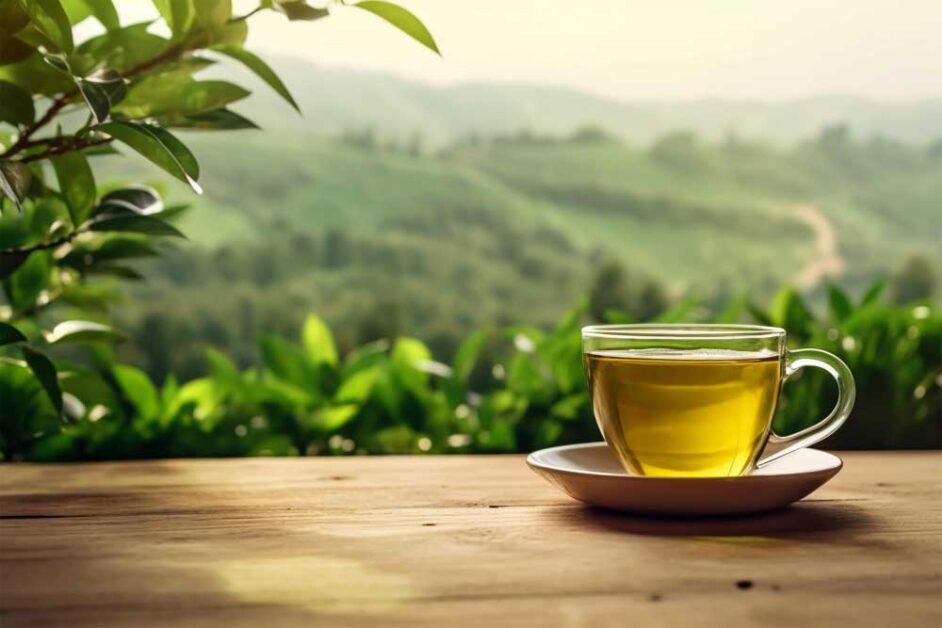
- Leaf Count: It takes approximately 2,000 tiny leaves to produce just one pound of Tea.
- Tea Variety: With around 3,000 different types, Tea is the second most consumed beverage globally, surpassed only by water.
- Unified Origin: Despite diverse tastes, looks, and aromas, black, white, green, and oolong teas all originate from the Camellia Sinensis plant, differing only in processing methods.
- Pricey Elegance: The world’s most expensive tea bag. A diamond-studded creation by Boodles Jewelers in England, was auctioned for £7,000. The proceeds was given to charity.
- Global Growth: Tea cultivation is done in 52 countries. The oldest Tea tree, a 3,200-year-old specimen, is found in China.
- Natural Repellent: Tea leaves, mainly green tea leaves, serve as a natural mosquito repellent. Offering a chemical-free method to keep these pests at bay.
- Health Benefits of Tea: The tea plant’s medicinal roots have been harnessed for centuries. It highlights the usage of Medicinal Tea in healthcare. For those seeking natural and holistic energy booster drinks, Medicinal Tea stands out as a soothing yet invigorating option.
- Tea Traditions: In Morocco, green Tea is a symbol of hospitality. It is often prepared with mint and served in three rounds with varying strengths and flavours.
- Tea and Time: The world’s most giant hourglass, known as the “Time Since Death,” is filled with green tea leaves. It takes 365 days to empty, emphasizing the passage of time.
- Tea Poetry: In Japan, there is a unique form of poetry called “senryu,” which is dedicated solely to Tea and the tea ceremony. It reflects the cultural significance of Tea in Japanese society.
History of Tea Drinking: Sip Back in Time
Tea is a beverage steeped in tradition and cherished worldwide. History of Tea carries a rich tapestry that transcends time and borders. As we delve into the origins of Tea, we unravel the remarkable journey of this ancient brew.
Tea is the elixir of life
Lao Tzu
The History of Tea in China
Tea’s tale begins in the mystic realms of China over 5,000 years ago. Legend intertwines with history as Emperor Shennong, in 2737 BCE, stumbled upon this elixir when leaves from a wild tea bush fell into his boiling water.

The resulting brew delighted the emperor. Enchanted by its flavor the Chinese began the tea cultivation. Giving birth to Tea, known as “cha” in Chinese. Fostering a tradition that would span millennia.
Rather without food for three days than Tea for one
Ancient Chinese Proverb
China holds the earliest documented history of tea consumption, dating back to the first millennium BCE. The Classic of Tea (茶經), by Lu Yu (陸羽; 729–804) a Tang dynasty writer, stands as an early and influential work on the subject.
History of Tea in Japan: The Essence of Zen
In the 12th century, Eisai (栄西), a Buddhist monk, introduced tea seeds from Japan. It marked the initiation of the Japanese tea industry. Here, Tea evolved into a profound philosophy, manifesting in the revered Japanese tea ceremony.
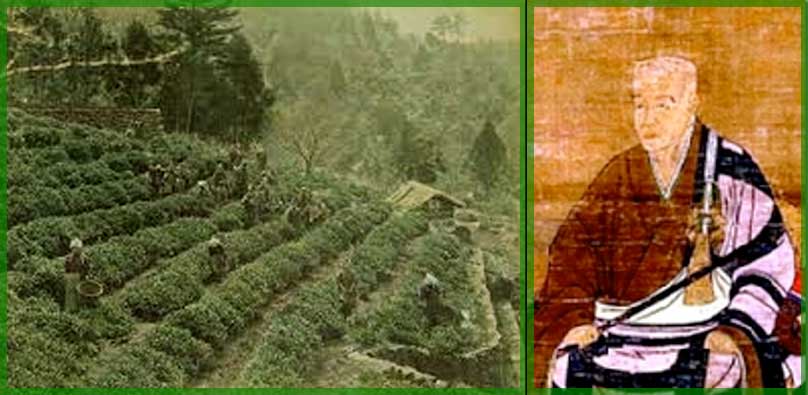
Chanoyu (茶の湯) or Sadō (茶道, encompasses the art of temae (点前). It is a traditional Japanese tea ceremony. It is a cultural endeavour where the matcha (抹茶), the powdered green Tea, is ceremonially prepared and presented.
Tea in Japanese Culture embodies diverse facets. The vibrancy of matcha, with its rich ceremonial history. It contrasts beautifully with the simplicity of sencha.
Tea Journey to Europe
In the early 1600s, the Tea began to be imported to Europe. Initially the business was done by Portuguese and Dutch traders. The Dutch East India Company, igniting a tea-drinking cultural revolution in Britain during the 18th century. The British, captivated by Tea’s allure, established Tea plantations in India. Thus shaping the course of history and trade.
Origin of Tea In India
The History of Tea in India trace back to British exploration in the early 1800s. Shaping a vast tea empire of Tea Plantation in India before independence in 1947. The Origin of Tea in India, began with experiments by Warren Hastings in 1774.
However, it was Sir Joseph Banks’ recommendation in 1776 that sparked a serious interest in tea plantation in India. Robert Kyd’s 1780 experiments and Robert Bruce’s discovery of a wild tea plantation in Assam marked pivotal moments.
In the early 1820s, the British East India Company initiated extensive tea cultivation in Assam. Initially focusing on a tea varieties traditionally prepared by the Singpho people. However the native Assam tea triumphed Tea Plantation in India. Leading to the formation of the Bengal Tea Association and the Assam Company.

Overcoming challenges, Tea in India flourished in the Himalayan foothills. Establishing India as a global tea powerhouse with 13,000 gardens and a workforce exceeding 2 million. The late nineteenth century saw British plantations in the Nilgiri massif, etching India’s indelible mark on the world’s tea map.
Indian Legend: Boddhidharma’s Gift of Wakefulness
According to an Indian legend, the revered Buddhist ascetic Boddhidharma cut off his eyelids during meditation. It gave rise to ten tea plants. Brewing their leaves banished sleep. From this the tale of wakefulness emerged and finds some reference online.
How did Tea get its name?
The Origins of the Word “Tea” finds its roots in the Mandarin Chinese word “té,” and was adopted into European languages. Meanwhile, the word “chai” originated from the Persian language, meaning “tea.” Later the word got adoption and spread into various languages like Russian and Hindi.
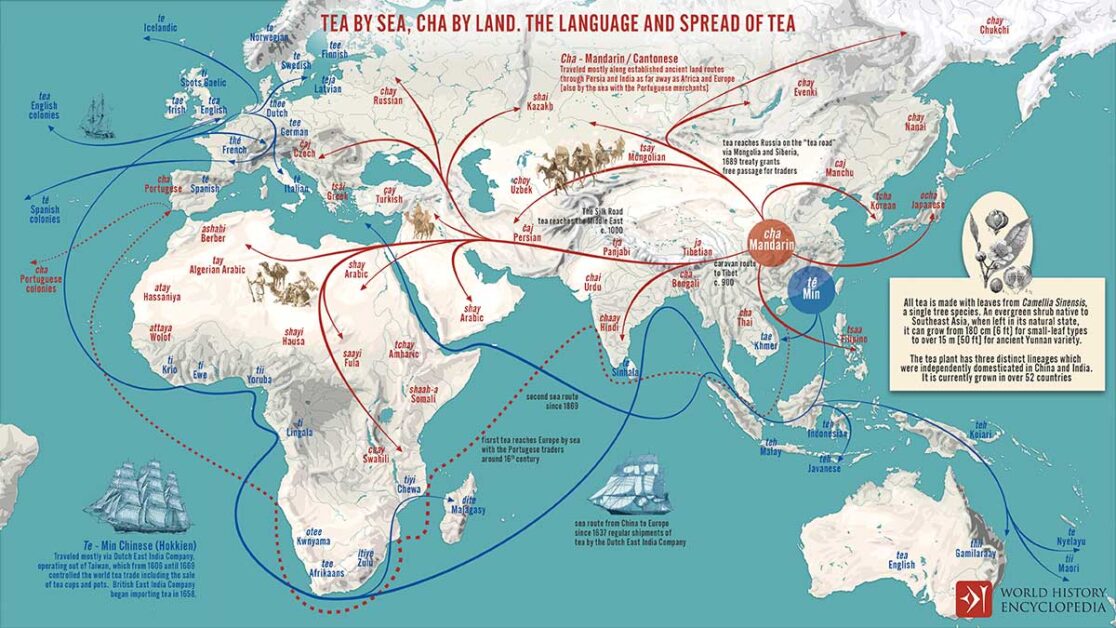
While the term ‘cha’ traveled through land trade along the Silk Road. The ‘te’ gained prominence through sea trade, particularly by Dutch traders. Naturally tea-growing regions often have unique names for tea, distinct from Chinese origins. This linguistic diversity reflects the various historical trade routes and cultural interactions.
Also read:
Modern Dynamics: Tea in India
Tea is the most popular beverage in the world next to water and is big business globally. Countries like China, India, Kenya, and Sri Lanka are among the largest producers of Tea worldwide.
India is a major global tea producer. Ranked as the world’s second-largest tea producer, India also holds the position of the third-largest tea exporter, with an annual export value of $1 billion. India consumes over 70 percent of its Tea domestically. Despite this, India has the lowest per capita tea consumption globally, standing at a mere 800 grams per year.
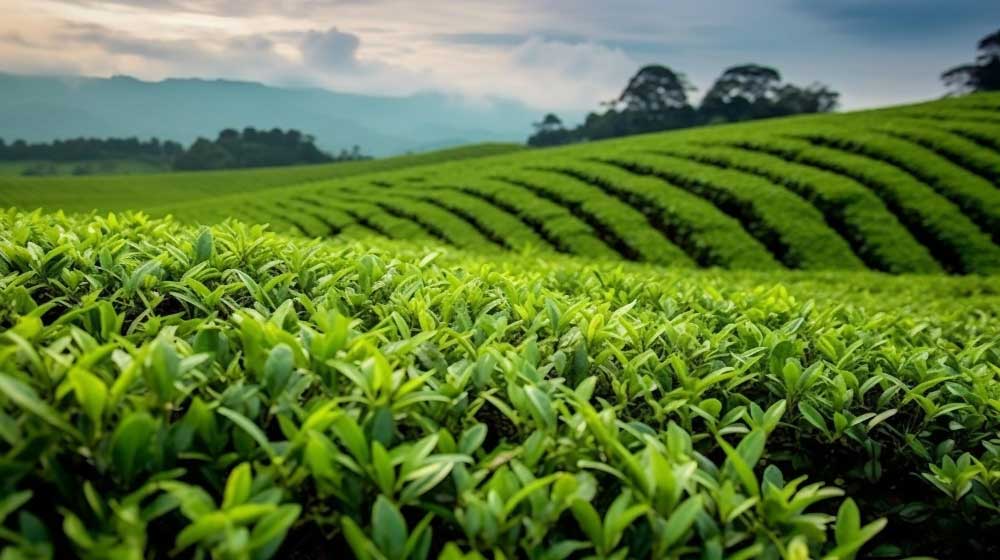
Indian Tea Landscape: Diverse Regions, Rich Varieties, Global Influence
The Tea Capital of the World is Jorhat, in Assam. Assam produces Tea because of its low elevation, humid environment, plenty of rainfall, and ideal temperature. In the realm of tea cultivation in India, beyond Assam. Significant Tea producing states in India include West Bengal, Tamil Nadu, Kerala, and Karnataka.
Tea Estates with renowned Tea varieties like Assam and Darjeeling flourish exclusively in India. Global Tea landscape gains prominence due to production of Tea in India. Tea Board of India oversees all aspects of Tea, maintaining control over the country’s thriving tea trade.
India exports various types of tea, including Black tea (80%), Regular tea (16%), and balance 3.5% from Green tea, Herbal tea, Masala tea, and Lemon tea.
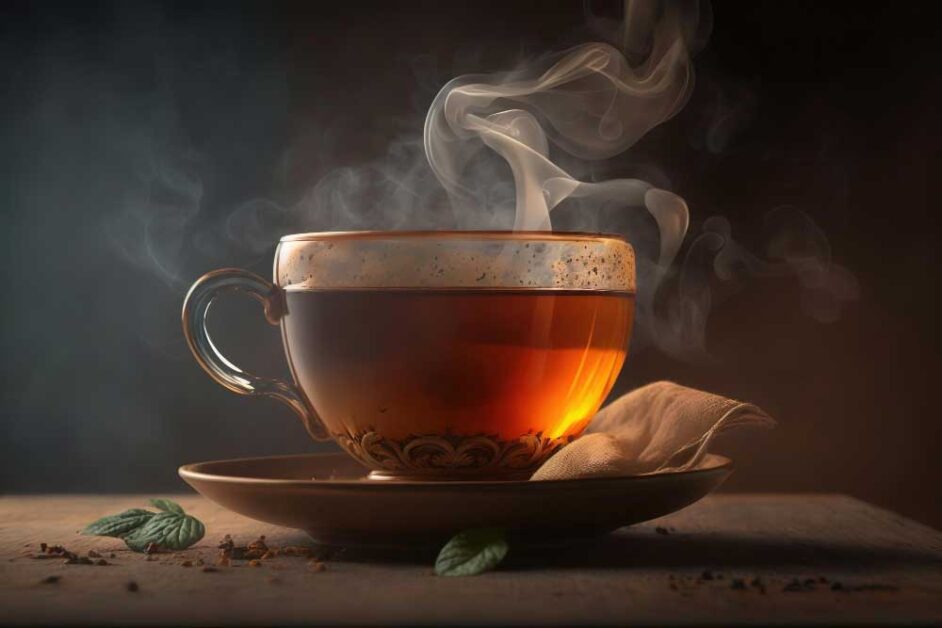
In 2023, the tea market in India attained a size of US$ 11.1 Billion. Predictions projects the market to achieve US$ 14.7 Billion by 2032. This forecast indicates a growth rate (CAGR) of 3.18% during the period from 2024 to 2032.
| Category | 1998 | 2015 | 2020 | 2021 | 2022 | 2023 |
| Production (M.Kg) | 874 | 1209 | 1258 | 1343 | 1365 | 1,373 |
| Imports (M.Kg) | 9 | 19 | 24 | 25.97 | 30 | 28 |
| Exports (M.Kg) | 210 | 229 | 210 | 197 | 231 | 231.08 |
| Consumption (M.Kg) | 650 | 1012 | 1134 | 1161 | 1188 | 800 |
| TOTAL Auction Price (Rs/Kg) | 76.73 | 128.60 | 190.96 | 174.84 | 180.92 | 180.92 |
Also Read:
- Beyond Trends: Embracing Pioneering Sustainability in the Fashion Industry
- The Magic of Millets: India’s Super Grain Goes Global
The Tea Plant: Camellia sinensis
Have you ever wondered what is Tea?
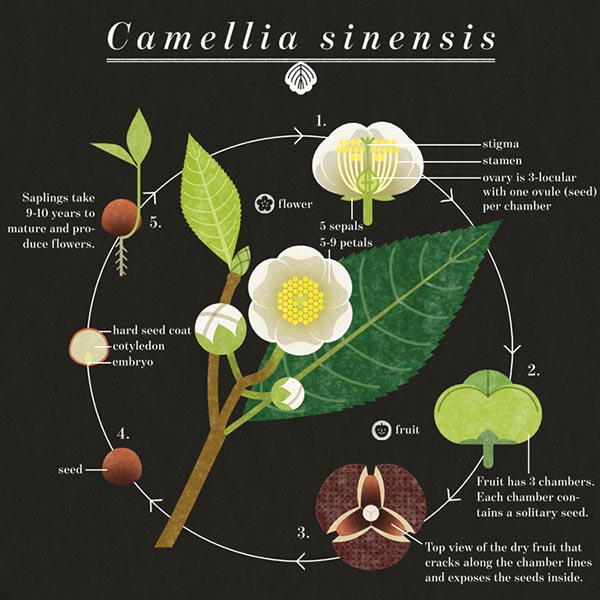
Tea is a fragrant beverage crafted by steeping cured or fresh leaves of Camellia sinensis in hot or boiling water. The humble yet extraordinary tea plant is scientifically known as Camellia sinensis. Native to East Asia, it is the botanical maestro behind the diverse world of Tea. This evergreen shrub or small tree boasts distinct characteristics that contribute to the richness of tea production.
Tea Varieties
In the vast world of Tea, the botanical origins play a crucial role in shaping the distinct characteristics of each brew. The two main tea varieties, Camellia sinensis var. sinensis and Camellia sinensis var. assamica, lay the foundation for Chinese and Indian Assam teas. Each variety contributes unique flavors and cultural significance to the world of Tea. Let’s delve into the intriguing nuances of these two tea varieties and the types of Tea they bring to our cups.
Camellia sinensis var. sinensis (Chinese Teas)
Types of Chinese teas, like green and white, are predominantly derived from the sinensis variety. It is known for smaller leaves and a subtler flavour profile. The Chinese teas undergo various processing methods, preserving the delicate nuances that define Chinese tea culture.
Camellia sinensis var. assamica (Indian Assam Teas)
The assamica variety, native to India, gives life to robust Assam teas. Recognizable by their larger leaves and bold, malty flavors, these teas thrive in the Assam region, contributing to the rich tapestry of India’s diverse tea offerings.

With a fantastic plant source like Camellia sinensis. No wonder tea has been cherished for centuries!
Botanical Characteristics of the Tea Plant
Camellia sinensis features glossy, elliptical leaves with serrated edges and delicate white flowers. Its adaptability allows for cultivation in various climates and altitudes, shaping the unique flavors of teas derived from different regions.
White and green teas use the youngest, most delicate buds and leaves. Black and oolong teas use more mature leaves. It takes about 3-4 years for a new tea plant to mature enough to harvest leaves for processing. Then the plant will continue producing for decades with proper care.
Geographical Distribution and Ideal Growing Conditions
The tea plant finds its ideal habitats in tropical and subtropical zones. It thrive in humid environments with acidic soil and generous rainfall. Popular growing regions include China, India, Sri Lanka, Kenya and Japan.
Prime growing conditions include well-drained soil, ample rainfall, and temperatures ranging from 50 to 90 degrees Fahrenheit, with altitude affecting flavor profiles.
The Tapestry of Tea Varieties and Cultivars
The tea varieties in India, Camellia sinensis, weaves a tapestry of flavors influenced by diverse types of Tea and cultivars. Shaped by soil, climate, and altitude, these nuances result in distinct teas that captivate palates worldwide.
- Darjeeling Tea: Elegantly grown in the Himalayan foothills, offering a light and floral brew.
- Assam tea: Flourishing in the Indian plains, known for bold and malty flavors.
- Dragon Well Tea: Cultivated in China, it is celebrated for its smooth, chestnut-like taste.
Tea bags and bottled tea dominate in Western markets. From family tea shops to modern cafés, serving and sipping Tea brings people together in cultures across the globe.
Tea Odyssey: A Journey Through Varied Infusions
We now embark on a compelling exploration of tea varieties. Each types of Tea unfolds a unique tale of flavor, culture, and well-being. This journey promises a diverse sensory experience.

The Diverse World of Tea
From the luscious leaves of the Camellia sinensis plant unfolds an exquisite tea varieties. Each type of Tea is a testament to the artistry of processing methods. Nature’s touch crafts a beloved beverage cherished worldwide.
Green Tea:
Unoxidized, offering a fresh and grassy profile with high antioxidant levels. Often touted as the best Tea for health. Green Tea tops the list of best Tea for health and is chock full of polyphenols and antioxidants. Among processed teas, it stands out as one of the least processed options. The health benefits of Green Tea include antioxidant support, metabolism enhancement, and potential risk reduction for chronic diseases.
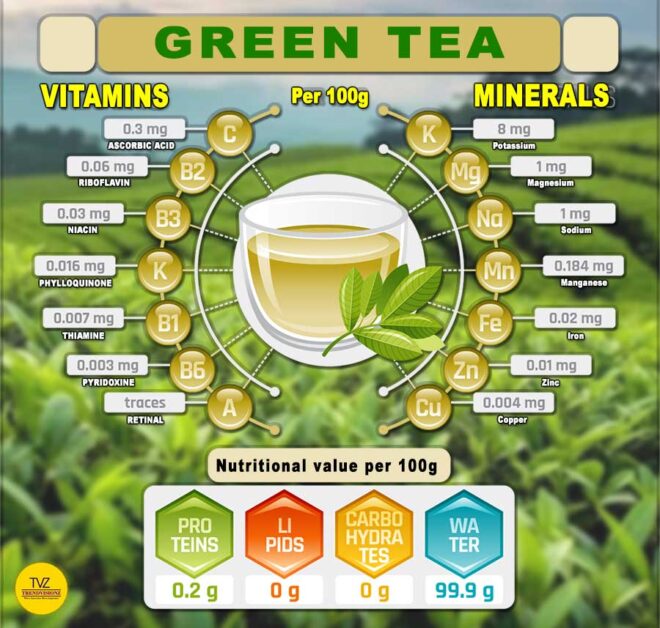
Black Tea:
A large and diverse category Black Tea is 2nd Most Popular in tasteatlas ranking. Fully oxidized, boasts bold and robust flavors with rich colours ranging from amber to dark brown. The health benefits of black Tea encompass improved heart health, enhanced focus, and antioxidants, contributing to overall well-being and vitality.
White Tea:
Minimal processing allows delicate flavours to shine, presenting a subtle and nuanced infusion. The health benefits of Tea include antioxidant properties and potential cancer-fighting attributes, promoting overall well-being and vitality.

Oolong Tea:
Partially oxidized, providing a harmonious blend of the characteristics of both green and black teas. Oolong tea benefits include a metabolism boost, heart health, and mental alertness for overall well-being and balance.
Pu-erh Tea:
Fermented and aged, it offers a unique earthy taste, gaining complexity over time. The intricate world of Tea unfolds through these distinct types of Tea. Each is a celebration of Camellia sinensis’ remarkable essence.
Tea Cultivation and Production
The young tender tea leaves and leaf buds are repeatedly harvested by hand during peak growing seasons. After harvesting, the leaves go through various processing methods to make different types of Tea. Finally, the finished tea leaves are packaged for enjoyment around the world. The health benefits of Tea are based on factors such as processing, oxidation, and the specific properties of each type of Tea.

CTC: Transforming Tea
The benefits of Tea enhance the CTC process. The precise method known as CTC (Crush, Tear, Curl) is commonly in use in the tea manufacturing process. By crushing, tearing, and curling leaves, it produces small, potent particles. The CTC facilitates quick brewing, ensuring a bold flavor, and maintains consistency.
Tea Grading and Quality
When it comes to Tea, quality matters. Tea embarks on a journey from the tea estate to the factory, undergoing grading processes to define its quality and characteristics. Tea grading involves classifying tea leaves based on quality following harvesting and processing. Higher quality teas are assigned a grade that indicates care in harvesting and processing. The business of Tea Plantation in India thrives on each brew’s uniqueness.
- Grades like OP (Orange Pekoe) and FOP (Flowery Orange Pekoe) indicate more hand processing.
- The highest grades have the most whole leaves and buds.
- Whole-leaf teas allow for a total infusion of flavor.
- Broken leaves may produce a quicker cup but with less complexity.
Seeking out quality loose-leaf or full-leaf Tea is worth the effort. You’ll be rewarded with a more nuanced, authentic tea experience.
Tea, a universally consumed beverage, offers hydration with diverse types and flavours. With zero calories, it’s an excellent choice for a low-calorie diet. Tea contains significantly less caffeine than coffee. Its a good alternative to coffee.
Top 5 Health Benefits of Tea
Tea is a universally consumed beverage. It offers hydration with diverse types of Tea and flavors. Benefits of Tea: with zero calories, it is an excellent choice for a low-calorie diet. Compared to coffee, tea varieties have substantially less caffeine.
Embrace wellness through Tea
Discover the holistic health benefits of Tea beyond its delightful flavors. A simple cup can nurture your well-being and provide moments of serenity.
- Relaxation – The L-theanine in Tea promotes calmness and eases anxiety. Sipping Tea helps you pause and unwind.
- Heart health – Tea’s antioxidants improve blood flow and lower blood pressure and cholesterol. Green Tea is incredibly beneficial.
- Immunity – Antioxidants like EGCG help strengthen your immune system to fight off illness.
- Hydration – Though lower in caffeine than coffee, Tea still counts as a healthy fluid. Opt for unsweetened varieties.
- Digestion – The polyphenols in Tea can help reduce inflammation in the gut and relieve digestive issues. Ginger tea is a good choice. Best tea for Gut health: Chamomile tea (कैमोमाइल : बबूने का फूल). Reduces harmful bacteria and alleviates abdominal discomfort.
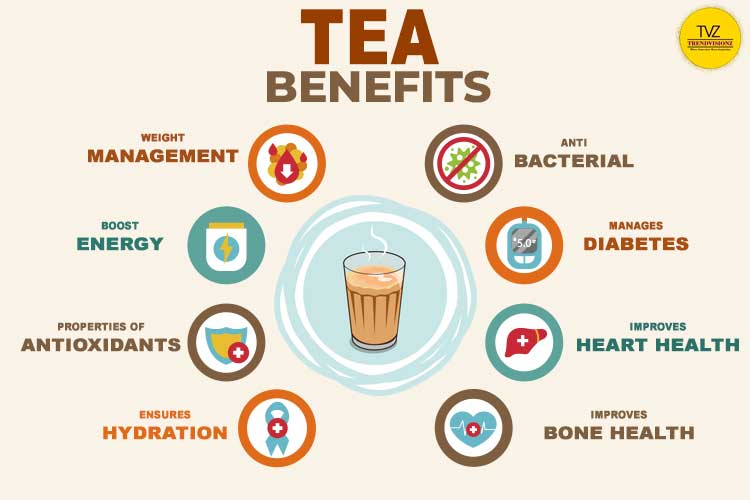
Slow down your busy life with a nice cup of Tea. Explore the ancient wisdom of timeless traditions. Discover modern tranquility through the benefits of tea in our recent article.
Best Tea for Health: Tea Bliss for Tranquil Moments
Indulge in the calming embrace of green Tea, chamomile, and mint, a soothing symphony for your senses and tranquillity.
- Green Tea: mellow flavour and antioxidants promote relaxation. Matcha powder can give an extra Zen boost.
- Chamomile: floral aroma has a soothing, calming effect to quiet the mind.
- Peppermint: refreshing zing helps boost mental clarity and uplift mood. Spearmint is milder.
- Lavender and Lemon Balm add floral notes to herbal blends for tranquillity.
- Decaffeinated Teas allow enjoyment of the ritual without stimulation.
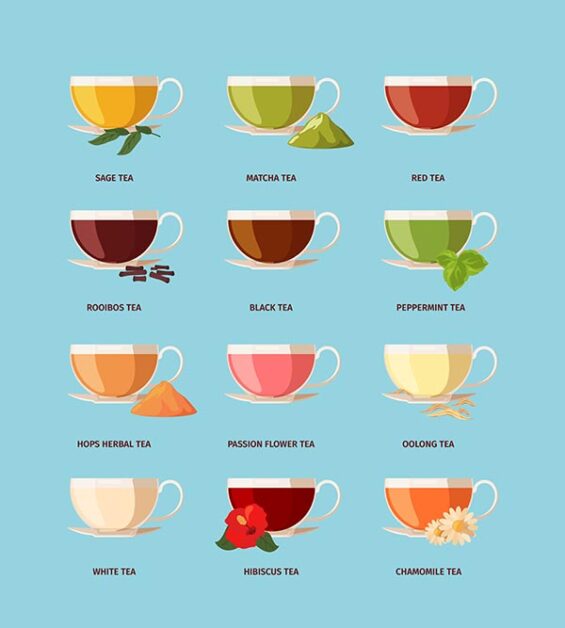
Slowing down to prepare and sip Tea thoughtfully enhances its calming benefits.
Best Herbal Tea: Exploring Tea Treasures
Venture beyond the ordinary with exotic blends and herbal elixirs, tailoring Tea to your well-being and global traditions.
- Look beyond basic black Tea. Explore exotic flavours like ginger peach or Moroccan mint.
- Herbal teas contain no actual tea leaves but offer unique health benefits. Chamomile may relieve stress, while peppermint can ease digestion.
- Find teas tailored to your needs, like blends to boost immunity or promote sleep.
- Consider your caffeine tolerance. Herbal teas are caffeine-free, while black and green teas have moderate amounts.
- Discover tea traditions from around the world. Japanese matcha, Indian chai, and Chinese pu-erh each have distinct flavours and rituals.
- Let your senses guide you. Trust your nose and taste buds to pick teas that provide tranquillity to your day.
As you conclude this tea-infused journey, may each cup bring tranquillity and every sip be a moment of blissful repose. Cheers to the calming magic of Tea!
Global Tapestry: Tea ceremonies and rituals
The simple act of drinking Tea can become a meaningful ritual. Embark on a global journey, exploring the rich and diverse tapestry of tea culture across nations, from the elaborate tea ceremonies to the profound tea rituals, and the evolving traditions.
From the delicate whisks of Japan to the bustling chaiwallahs of India. Tea traditions paint the globe in aromatic hues. Witness the serene Chinese gongfu cha unfold. Savor the milky sweetness of Moroccan mint tea. And join the boisterous laughter over Russian samovars. Every cup brims with history, culture, and a promise of connection. A global story brewed one sip at a time.
Chinese Tea Culture: A Symphony of Tradition
Dive deep into the ancient roots of Chinese tea culture, unveiling the intricacies of the traditional tea ceremony. Discover the spiritual and cultural significance woven into every nuanced step of this revered practice.
Japanese Tea Culture: Harmony in Every Sip
Uncover the profound significance of the Japanese tea ceremony, where each gesture and element contributes to a harmonious experience. Delve into the artistry and mindfulness embedded in this timeless tradition.
British Tea Culture: Afternoon Tea
Trace the evolution of British tea culture, with a focus on the iconic afternoon tea. From its historical roots to modern adaptations, witness the elegance and friendliness that have shaped this cherished British ritual.
Indian Chai Culture: A Melodic Blend of Tradition
Immerse yourself in the enchanting world of Indian chai culture, where Tea is not just a beverage but a rhythmic melody that echoes through every household. From the bustling streets to serene homes, experience the heart-warming rituals that define India’s deep-rooted relationship with Tea.
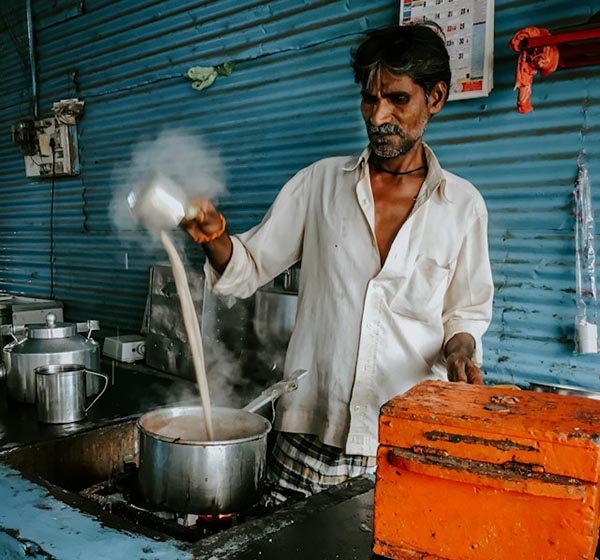
Even enjoying your daily cuppa alone can be a grounding ritual. The systematic process of preparing Tea helps you be more mindful and present.
Best Herbal Tea: A Story Unfurling Beyond the Traditions
While black, green, and oolong teas claim the spotlight in the history of tea drinking. A fascinating parallel narrative exists. The tale of specialty and herbal infusions. This best herbal tea story, though less documented, is just as rich. Weaving together ancient uses, cultural quirks, and the ever-evolving quest for unique flavors.
In the early days, specialty teas often arose from necessity. In Japan, Sencha, with its vibrant green leaves, emerged as a more affordable alternative to precious Matcha. Masala tea blends In India, warming spices with black Tea to combat the chill of the Himalayas. These blends weren’t just about taste; they reflected regional needs and resourcefulness.
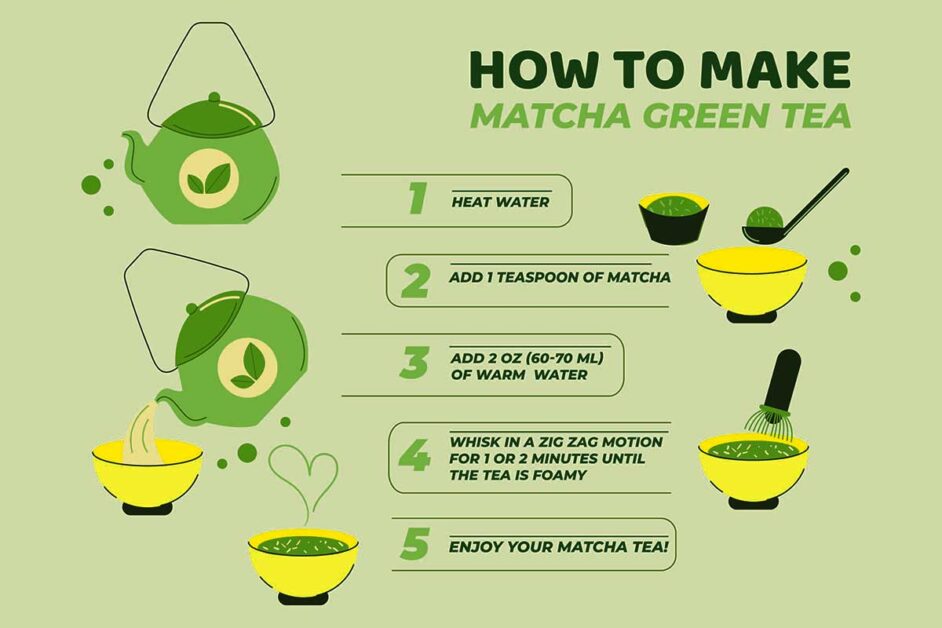
Herbal teas, on the other hand, boasted ancient lineages, their roots often intertwined with traditional medicine. Egyptians sipped on hibiscus for its cooling properties. The Chinese considered chrysanthemum Tea a remedy for fever. In Europe, chamomile and peppermint calmed anxious stomachs. The elderflower soothed throats. These “tisanes,” as they are sometimes called, weren’t merely beverages; they were steeped in the wisdom of generations.
Herbal tea is generally considered a mild energy booster drinks due to its caffeine-free nature. Step away from the familiar and immerse yourself in a world of the best herbal Tea.
- Moroccan Mint: Steeped in history and hospitality, this vibrant green tea dances with the refreshing tingle of spearmint, a cornerstone of Moroccan social gatherings.
- Japanese Genmaicha: Roasted brown rice kernels mingle with emerald green tea leaves, creating a toasty, nutty infusion that embodies Japanese simplicity and resourcefulness.
- Indian Masala Chai: A symphony of spices like cardamom, ginger, and cinnamon infuses black Tea, warming the soul and embodying the vibrant spirit of Indian chaiwallahs.
Tea Alchemy: The Art of Blending
There is a magical alchemy behind expert tea blending, where artisans skillfully intertwine diverse elements to create enchanting flavours. Explore a world where each cup is a testament to the mastery of tea blending.
Discover:
- Healing Elixirs: Immerse yourself in the therapeutic embrace of herbal teas. Offering remedies that soothe the soul and invigorate the body, from calming chamomile to the spicy warmth of ginger.
- Cultural Infusions: Embark on a global tea adventure. Savouring diverse flavours from matcha ceremonies in Japan to aromatic chai rituals in India.
- Tea Beyond the Cup: Elevate your senses as specialty teas transcend sipping. Transforming desserts and savoury dishes with delicate and robust tea flavours.
Immerse yourself in a sensory symphony where tradition meets innovation, inviting you to savour the extraordinary in every tea-infused moment.
Brewing Bliss: The Art of Crafting the Perfect Cup
Open the gateway to the world of energy booster drinks, where each sip becomes a serene infusion of wellness and vigor. Embark on a journey of tea alchemy with the delicate art of brewing. A timeless practice that traces its roots through the history of tea drinking. From water temperatures to quality leaves, master the essentials for a tranquil sip, unlocking the essence of every moment. The art of brewing the perfect cup of Tea comes down to a few key factors:
- Water temperature – Each type of Tea has an ideal temp. Black Tea brews best with boiling water. With more delicate green Tea, aim for 160-180°F.
- Steep time – Follow general guidelines, but taste test and adjust to your preferences. Black Tea may need 3-5 minutes, while green Tea steeps faster at 1-3 minutes.
- Quality tea leaves – Buy from reputable sellers. The grade and freshness of the leaves make a difference.
- Proper storage – Keep Tea sealed in an airtight container away from light, air, moisture, and aromas.
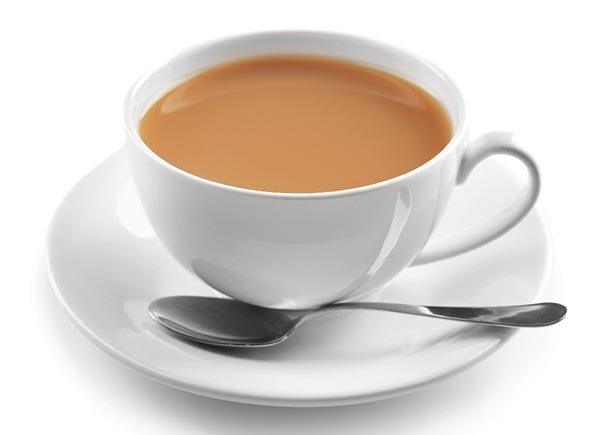
Sip and Savor. Elevate every tea moment, by discovering the artistry of tea brewing. Every basic action dances in harmony. Embrace the tranquillity steeped in every sip. Mastering these basics allows you to appreciate and unlock the tranquillity in every sip fully.
Brewing the Healthiest Cup: A Tea Connoisseur’s Guide
Discover the secrets to crafting the healthiest cup of Tea. Tea brewing offers all health benefits of Tea. A rich tradition is woven through the tapestry of the history of Tea. From water quality to mindful sipping, elevate your tea experience and well-being.
Step-by-step Guide: Healthiest Cup of Tea
Use filtered or bottled water to avoid impurities affecting the flavour.
- Brew with hot but not boiling water between 160°F and 180°F. Boiling water can scorch delicate tea leaves.
- Steep for 2-3 minutes or to taste. Letting Tea steep too long releases excess tannins, causing bitterness.
- Add lemon, honey or milk if desired, but avoid sugary syrups and creamers that diminish health benefits.
- Sip mindfully, focusing on the aroma and flavors. Make it a calming ritual.
- Brew loose-leaf Tea over tea bags for fuller flavour and more antioxidants.
- Clean teaware after each use to prevent residues affecting taste.
- Experiment with varieties like white, green, oolong and herbal to find your favourites.
Sip, Savor, Thrive. Craft Wellness, One Tea Cup at a Time. Unveil the art of brewing a health-infused cup of Tea. Let each sip be a mindful journey where flavour, aroma, and well-being intertwine for a moment of blissful tranquillity.
History of Tea: Bridging Tradition with Technology
In the enchanting world of Tea, technology takes center stage, orchestrating a seamless blend of ancient rituals and modern innovation. From the fields to your cup, embark on a journey where robotics tend to tea plants, sensors optimize processing, and blockchain ensures sustainability.

As the leaves settle in our cups and the aroma lingers, the journey through Tea and technology unveils a promising future. Embrace the evolving landscape, where tradition gracefully dances with innovation. May each steeping moment become a testament to the harmonious coexistence of centuries-old rituals and cutting-edge advancements.
Also Read:
- Empower Your Life: Work Life Balance Examples for Happiness
- Beyond Horoscope 2024: Zodiac for Health, Love, & Career Growth
- Beyond Trends: Embracing Pioneering Sustainability in the Fashion Industry
FAQ: History of Tea Drinking
Is Tea good for you?
Yes! Tea contains antioxidants and polyphenols that may boost heart health, support digestion, and improve immunity. Green Tea, in particular, has been linked to many health benefits. Tea is on top of the the list of good energy booster drinks.
Does Tea have caffeine?
All true teas contain some caffeine since they come from the same plant. However, the caffeine content can vary widely based on the tea type, with black Tea having the most caffeine.
Is there any Tea for Weight Loss?
Yes, Tea contains catechins and caffeine that may boost metabolism and enhance fat breakdown. While not a magic solution, incorporating Tea into a balanced diet and exercise routine can contribute to modest weight loss, with added benefits like calorie reduction and increased energy expenditure.
How much Tea can I drink?
Up to 5 cups of black Tea per day is considered safe. More than that, too much caffeine may cause side effects.
Conclusion
In the enchanting saga of Tea, we journeyed through its origin of Tea in China. This aromatic odyssey weaves itself into the fabric of the history of tea drinking and well-being. Each cup brims with a legacy of tradition, a symphony of flavours, and the promise of tranquil bliss.
Whether you seek deep cultural dives or the simple joy of brewing the perfect cup. This journey has unfolded the secrets of the health benefits of Tea.
The health benefits of Tea, with its antioxidants and polyphenols. Tea plantation in India, flourishing in the lush landscapes of Assam and beyond. From the verdant tea estates to the diverse types of Tea. We uncovered the various flavours that steep within every cup.
Remember, the magic of Tea lies not just in the brew but in the mindful moments it creates. So, embrace the art of savoring. Let the aroma envelop you, and discover a world of tranquility, one sip at a time.
Our Digital Imprints:
Anuj Mahajan is a Mass Communication Specialist,
ICF Certified Coach & Corporate Trainer. Motivational Speaker / NLP Lifecoach.
Chief Operating Officer: Nuteq Entertainment Pvt Ltd, and
Co-Founder: Trendvisionz – A Premier Digital Marketing Agency in India
Get Connected to us with our Newsletters-Transforming Lives… Creating the magic. Just – Believe ~ Practice ~ PerformBizTech Chronicle… Navigating Tomorrow’s Tech Frontiers 🚀
Join my LinkedIn Group: Digital Marketing, Content Creation World Group
Follow me on Twitter or LinkedIn. Check out my website.
